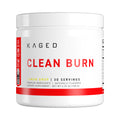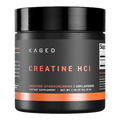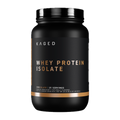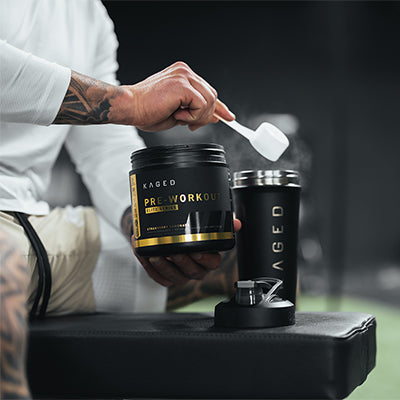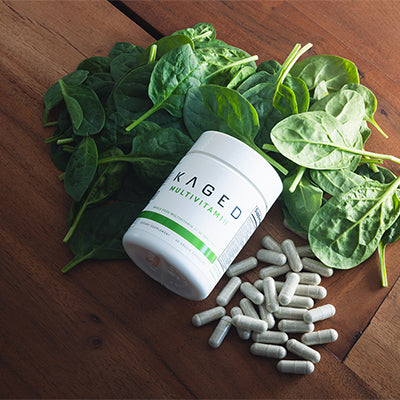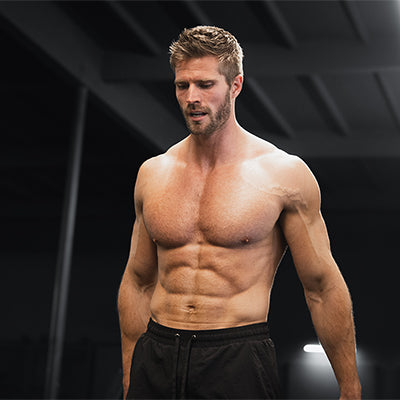Want to send your chest progress soaring? It’s important to focus on continually changing your workout program, looking for new and exciting ways to push your body to the limit. Pre-exhaustion training is one of the best ways to do just that.
What Is Pre-Exhaustion Training?
With pre-exhaustion training, you’re going to do a few sets to fatigue the smaller muscle groups that assist the primary muscle group you want to train, forcing that larger muscle group to work harder.
In the case of chest pre-exhaustion training, this means tiring out the triceps and the shoulders, both of which can help the chest out when doing your main compound lifts.
This can be applied to many muscle groups. If you want to focus on your back, you can pre-exhaust your biceps. If you want to work your quads, you can pre-exhaust the hamstring. In today's article, we'll give an example of chest pre-exhaustion training.
What Are The Benefits of Pre-Exhaustion Training?
Let's cover a few of the big ones to know.
Lower Risk Of Injury
If you’re no stranger to heavy lifting, you may already be suffering from shoulder or elbow pain thanks to all the heavy lifts you are doing on a day to day basis.
In order to keep your workouts progressing along, it’s going to be essential that you provide the overloading stimulus to the muscle cells. That being said, it doesn’t necessarily have to come in the form of more weight.
By using pre-exhaustion training, you’ll get the same intensity on the chest muscles despite using a much lighter weight load. This means you can still see excellent strength gains and muscle growth without having to place so much stress on the joints.
Improved Mind-Muscle Connection

Another benefit that typically comes when lifting lighter weights is an enhanced mind muscle connection. While you can simply lighten the weight and focus on this connection, in doing so, you may shortchange yourself the strength progress you’re looking for.
When you use pre-exhaustion training, you’ll get around this. Generally speaking, the better your mind-muscle connection is, the better your muscle pump will be. This, in turn, can help accelerate muscle growth and development.
(Note, a great pre-workout will help with your mind-muscle connection too, thanks to increased muscle pumps. Learn more about L-Citrulline, the pump ingredient, in this article.)
Improved Muscular Endurance
If there’s one thing you can be sure of with pre-exhaustion training it’s that you’ll be facing a high degree of fatigue. Your muscles will be screaming out but yet, you’ll need to keep pushing on.
This can help develop great levels of muscular endurance that will only serve to benefit you when you go back to your normal heavy lifting sets.
You’ll find you’re better prepared to push through those sets, getting in an extra rep or two when you otherwise would have stopped short.
Assisted Muscle Gains
Finally, don’t forget about those muscles that you are pre-fatiguing early either. While they won’t be coming into play as much when doing your compound lifts, they still will be utilized to some extent. So you may just find that you get some extra strength and size gains in those muscles as well.
Now you will be hitting them fresh up first in the workout, allowing you to really push them to the limit and then they’ll be finished off when you do your normal chest work.
All in all, using the concept of pre-fatigue every so often is a great way to take your strength level and physique up a notch. Do keep in mind this workout protocol can be very draining however, so you won’t want to use it each and every workout. Try doing it once every few weeks when needed to help get past any sticking points in your workout routine.
Here Is an Example of a Pre-Exhaustion Chest Workout
Barbell Shoulder Press – 3 sets of 8 reps
Lateral Raises – 2 sets of 20-25 reps
Front Raises – 2 sets of 20-25 reps
Tricep Press-Down – 2 sets of 25 reps
Close Grip Bench Press – 1 set of 15 reps
Barbell Bench Press – 3 sets of 8-10 reps
DB Incline Bench Press – 2 sets of 10-12 reps
DB Chest Fly – 3 sets of 15 reps
How to Write Your Own Pre-Exhaustion Chest Workout
This is a great sample workout, but if you're going to be adding chest pre-exhaustion workouts to your program, you'll need to mix it up. So here's a chest pre-exhaustion template.
#1: Any Overhead Press
This could be a barbell shoulder press, a seated dumbbell press, a landmine press, or any other shoulder-dominant press.
If you struggle with shoulder pain, lean towards something like a landmine press or a kettlebell press.
For this one, you'll want to do a lower rep range. If your goals are more about strength and less about hypertrophy, go in the 3-6 range. For more hypertrophy, go with 6-10.
#2: A Shoulder Isolation Exercise
Next, choose a shoulder isolate exercise, like a lateral raise with a dumbbell or cable. In the name of exhausting the muscles, you'll want to go with a higher rep range, from 15-25.

#3: A Tricep Isolation Movement
Next, move on to triceps. You use your triceps during shoulder movements, so one exercise will get the job done.
Choose between a tricep pulldown, dips, bench dips, overhead tricep extensions, or other movements. For more on tricep training, you can check out this article with 4 simple steps to kill triceps.
Then, move on to your chest workout.
As you can see, pre-exhaustion training doesn't need to be overkill. Three exercises is the sweet spot. If this feel like a lot, you can even drop down to two and choose one compound shoulder movement along with one tricep movement.
When to Add Pre-Exhaustion Workouts in Your Training
Next, let's talk about how this can fit into your overall programming. Here are a few considerations for that.
Ideally after an off-day.
Pre-exhaustion training is intense. You're adding volume to your workout, so you'll want to come in fresh. Because of that, place this workout after an off-day.
At least two days before training shoulders or triceps.
Ideally, have them as spread out in your training as possible. Let's look at an example.
Here's an example 5-day workout split.
Monday: Pre-Exhaustion Chest Workout
Tuesday: Leg Day - hip dominant
Wednesday: Off
Thursday: Shoulders + Triceps (+ optional chest.)
On this day, if you're prioritizing chest growth, add 1-2 chest exercise to your workout
Friday: Leg Day - Squat Dominant
Saturday: Back + Biceps Workout
Sunday: Off

